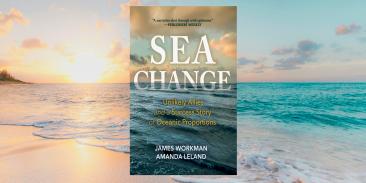New book analyzes BPA, other chemicals’ effects on human health
(Washington, D.C. – February 19, 2013) A new book by a leading environmental health and chemical policy expert takes a detailed look at one of the most contentious public health issues today – the health impacts of potentially toxic chemicals used in common household items, chemicals that are now found in most humans tested today.
Is It Safe?, by Sarah Vogel of Environmental Defense Fund, chronicles the public outcry over bisphenol A – better known as BPA — in baby bottles. The book examines the BPA crisis as part of a longer history to define the safety of chemicals, and to understand the effects of chemicals on the human body.
“When Americans demanded BPA-free bottles, it reflected a growing anxiety about the safety of chemicals in the marketplace,” says Vogel. “Advances in scientific research are showing potential links between chemical exposure and health issues like diabetes, heart disease, breast cancer and reproductive problems. At the same time, people and often regulators don’t know what chemicals are in everyday products.”
Is It Safe? traces the science and evolving public and political debate about chemical safety — from the Mad Men-era when America seemed to embrace the corporate slogan “Better Living through Chemistry” with unqualified enthusiasm, to today’s deepening concerns that “better living” may be hazardous to our health.
As chemical production exploded over the past 60 years and transformed the world in which we live, we became quite literally what we made—a little bit of plastic, pesticides, flame retardants, and BPA. Is It Safe? confronts the major health and policy challenge that has resulted — given that we are all exposed to industrial chemicals from conception to old age, what defines the safe use of chemicals, and how can we build a more sustainable and healthy future.
“Removing BPA from bottles won’t take care of the problem,” says Vogel. “No single chemical ban will be the answer. The answer will have to involve major changes in the way chemical safety is assessed and regulated across the board. This year promises to be pivotal for the future of chemical policy in America.”
With more than 3 million members, Environmental Defense Fund creates transformational solutions to the most serious environmental problems. To do so, EDF links science, economics, law, and innovative private-sector partnerships to turn solutions into action. edf.org
Media Contact
Latest press releases
-
Brazil’s call to action on integrated fire management and wildfire resilience elevates wildfire as a global priority
November 7, 2025 -
Electricity Bills Have Risen in 47 States, While Trump Administration Blocks the Cheapest, Cleanest Energy Sources
November 7, 2025 -
AGREE, EDF, and Rewiring America Secure Progress Towards Heat Pump-Friendly Electric Rates in Con Edison Rate Case
November 6, 2025 -
New Environmental Defense Fund Report Urges New York City to Take Unified Approach to Housing and Climate Crisis to Protect Communities from Future Displacement
November 6, 2025 -
EDF, Allies File Comments Urging the Trump EPA to Continue the Greenhouse Gas Reporting Program
November 3, 2025 -
Climate Workforce Summit by Ashoka University and EDF Sparks Cross-Sector Collaboration to Accelerate India’s Green Transition
November 1, 2025











